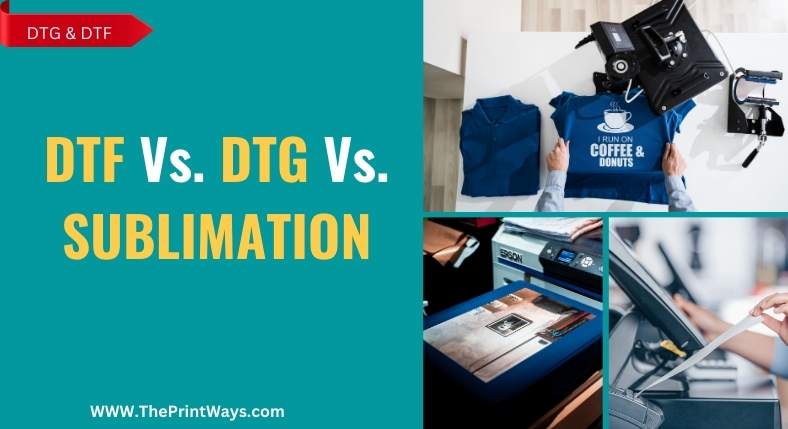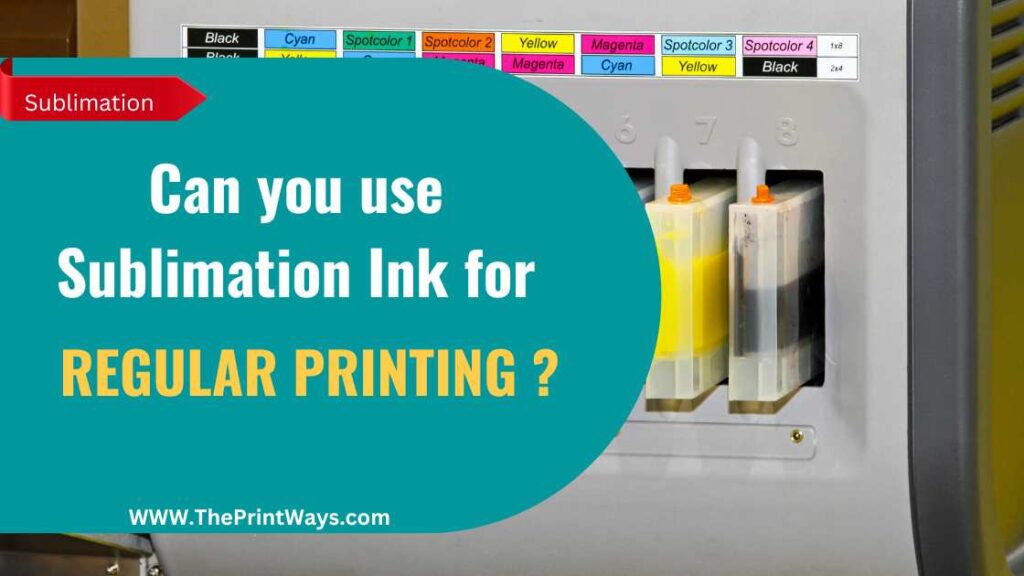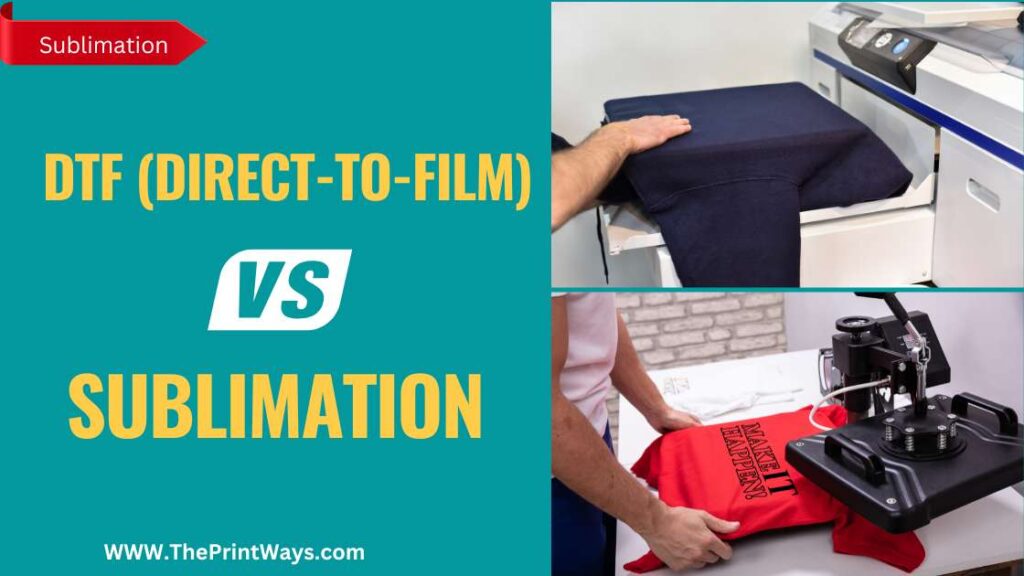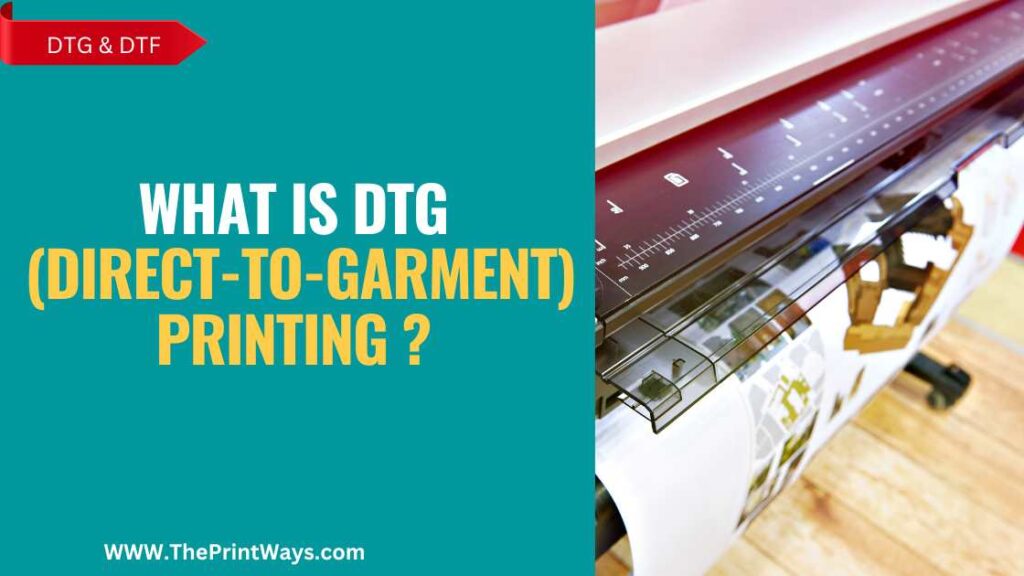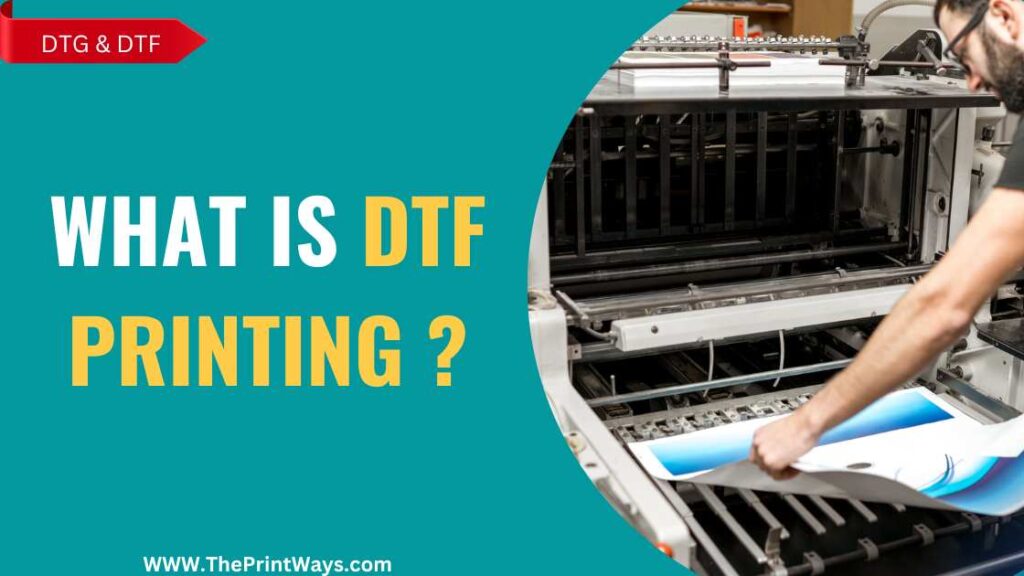DTF, DTG, and Sublimation are just a few of the options when it comes to printing on fabrics. You should consider the benefits and drawbacks of each approach separately.
In this final comparison, we’ll look at the many ways in which DTF, DTG, and sublimation printing differ, including in terms of print quality, cost, durability, color vibrancy, design adaptability, and production speed.
This comparison will help you select the best printing method for your needs, whether you are a fashion designer, print shop owner, or do-it-yourself enthusiast.
Introduction to these Printing Techniques
1. DTF (Direct-to-Film)
DTF is a relatively recent printing technology that has grown in popularity due to its simplicity and adaptability. DTF entails printing the image onto a specific film with a printer before transferring it to the required surface with a heat press.
DTF printing works well on a variety of textiles, including cotton, polyester, and mixes. DTF printing is ideally suited for high-detail designs, such as pictures or intricate designs.
2. DTG (Direct-to-Garment)
DTG printing is a digital printing technology in which the image is printed directly into the fabric using a specialized inkjet printer.
DTG printing is ideally suited for cotton and cotton blends, although it can also print on other materials such as polyester. DTG printing is perfect for printing small to medium-sized graphics with fine details.
3. Sublimation
Sublimation is a printing technique that includes utilizing heat and pressure to put a design onto a substrate. The design is produced on special transfer paper with a printer before being transferred to the substrate with a heat press.
Sublimation printing works best on materials with a high polyester content or those have been treated with a polyester coating. Sublimation printing is perfect for huge graphics and all-over prints.
DTF Vs DTG Vs Sublimation (Comparison)
DTF, DTG, and sublimation are three common printing processes used in the textile business. While each method has its own distinct characteristics, it is critical to understand the differences between these methods in order to select the best one for your needs.
In this comparison, we will look in depth at each method, discussing its printing quality, cost, durability, color vibrancy, design freedom, and production speed.
Printing Quality:
DTF printing adheres a transfer film to the fabric, resulting in high-quality prints with crisp edges and delicate details. DTF prints are more durable than DTG prints and are therefore appropriate for applications requiring long-lasting prints. DTF printing delivers vibrant colors that stay bright even after numerous washing.
DTG printing prints directly onto the garment using inkjet technology. This produces a softer print with a slightly faded, vintage appearance. DTG printing yields prints with high-resolution pictures and fine details, making it ideal for complex designs. DTG prints, on the other hand, are less durable than DTF prints and may fade or crack over time.
Sublimation printing transfers color onto fabric using heat and pressure. The dye penetrates the fibers of the fabric, resulting in bright and long-lasting patterns. Because dye can only bond with polyester fibers, sublimation printing is ideal for printing on polyester or polyester-blend fabrics. Sublimation prints do not fade, break, or peel, making them ideal for long-lasting applications.
Cost:
DTF printing is the most expensive of the three processes because to the considerable investment in equipment and materials required. DTF printing takes additional time and labor because the transfer film must be cut to size and adhered to the cloth before printing. DTF printing, on the other hand, is suited for a wide range of fabric kinds and colors, including dark materials.
DTG printing is less expensive than DTF printing, however the printer and ink might still be expensive. Because the ink may not be visible on darker fabrics, DTG printing is best suited for light-colored fabrics. DTG printing, on the other hand, is faster and more efficient than DTF printing, making it appropriate for high-volume production.
Sublimation printing is the least expensive of the three technologies because it requires the least amount of setup and equipment. Sublimation printers are generally inexpensive, as is dye-sublimation ink. Sublimation printing, on the other hand, is restricted to polyester or polyester-blend materials, which might be more expensive than other fabric types.
Durability:
DTF and DTG prints are both long-lasting, with the print remaining bright even after several washings.
DTG prints, on the other hand, are less durable than DTF prints, and the print may fade or shatter over time.
DTF prints are more robust, making them ideal for long-term printing applications.
Sublimation prints are also long-lasting, however direct sunlight might reduce color intensity. The prints may fade over time, however this is usually not a problem unless the cloth is exposed to direct sunlight over extended periods of time.
Color Vibrancy:
DTF printing generates more rich colors than DTG and sublimation printing.
When compared to DTF printing, DTG printing produces slightly muted colors.
The color intensity of sublimation printing can be modified by the color of the fabric being printed on. The most bright hues are produced by light-colored materials.
Design Flexibility:
DTF printing is appropriate for a variety of fabric types and colors, including dark materials. As a result, it is a versatile printing technology that may be utilized for a wide range of applications.
DTG printing works better on lighter-colored fabrics and may not perform as well on darker materials.
Sublimation printing is only suited for polyester or polyester-blend materials, restricting its applicability. Sublimation printing, on the other hand, enables for full-color printing and is great for printing photographic pictures and complicated designs.
Production Speed:
DTF printing takes time since the transfer film must be cut to the precise size and adhered to the cloth before printing. As a result, it is slower than DTG and sublimation printing.
DTG printing is more efficient and faster than DTF printing, making it ideal for high-volume production.
Sublimation printing is also relatively quick and efficient because the dye is quickly and easily transferred to the fabric.
Also Read: Sublimation Vs Screen Printing: Ultimate Comparison (2023)
DTF vs DTG vs Sublimation: Printing Limitations
DTF Printing:
- DTF printing necessitates the application of a particular adhesive powder to the cloth, which can be messy and time-consuming.
- The adhesive powder might be sensitive to heat, humidity, and other environmental conditions, affecting print quality.
- DTF printing is not recommended for printing on dark materials since the adhesive powder will show through and alter the color.
DTG Printing:
- Because some fabrics may not be compatible with the ink used in the printing process, DTG printing is not suitable for all fabrics.
- Because DTG printing requires multiple passes to achieve the desired color and quality, it can be slower than other printing methods.
- DTG prints may fade over time, especially if washed regularly or exposed to direct sunshine.
Sublimation Printing:
- Sublimation printing is only appropriate for polyester or polymer-coated materials, hence it cannot be used to print on natural fabrics such as cotton or silk.
- Sublimation printing can be costly due to the use of specialty inks and equipment.
- Because the quality of sublimation prints is affected by the quality of the material being printed on, it may not be suitable for low-cost or low-quality fabrics.
You May Like: DTF Vs Sublimation: Which is Better ?
Final Thoughts
To sum up, direct to fabric (DTF), direct to garment (DTG), and sublimation printing are all viable options for printing graphics on fabrics, each with their own set of benefits and drawbacks.
DTF printing is versatile, allowing for the creation of long-lasting, high-quality prints with precise details on a variety of textiles such as cotton, polyester, and mixes.
Digital direct to garment (DTG) printing is best for printing on cotton and other natural fabrics because it yields prints with rich colors and crisp details.
To get the most durable and long-lasting designs on polyester fabrics, sublimation printing is your best bet. The ideal printing method is ultimately determined by factors such as the cloth, design complexity, durability, and budget.

